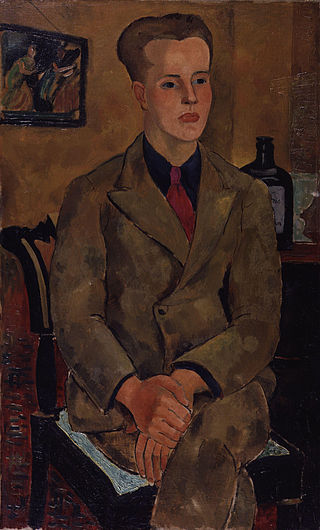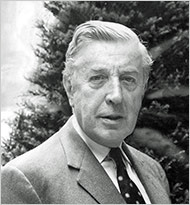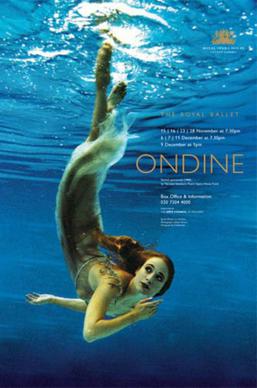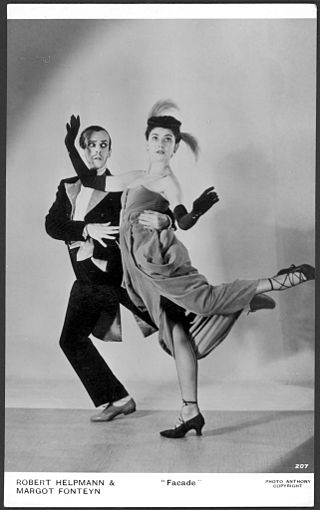Related Research Articles

Leonard Constant Lambert was a British composer, conductor, and author. He was the founding music director of the Royal Ballet, and he was a major figure in the establishment of the English ballet as a significant artistic movement.

Sir Frederick William Mallandaine Ashton was a British ballet dancer and choreographer. He also worked as a director and choreographer in opera, film and revue.

Romeo and Juliet, Op. 64, is a ballet by Sergei Prokofiev based on William Shakespeare's play Romeo and Juliet. First composed in 1935, it was substantially revised for its Soviet premiere in early 1940. Prokofiev made from the ballet three orchestral suites and a suite for solo piano.

The Royal Ballet is a British internationally renowned classical ballet company, based at the Royal Opera House in Covent Garden, London, England. The largest of the five major ballet companies in Great Britain, the Royal Ballet was founded in 1931 by Dame Ninette de Valois. It became the resident ballet company of the Royal Opera House in 1946, and has purpose-built facilities within these premises. It was granted a royal charter in 1956, becoming recognised as Britain's flagship ballet company.

Sylvia, originally Sylvia, ou La nymphe de Diane, is a full-length classical ballet in two or three acts, first choreographed by Louis Mérante to music by Léo Delibes.

Façade is a series of poems by Edith Sitwell, best known as part of Façade – An Entertainment in which the poems are recited over an instrumental accompaniment by William Walton. The poems and the music exist in several versions.

The Scythian Suite, Op. 20 is an orchestral suite by Sergei Prokofiev written in 1915.
Barry Wordsworth is a British conductor.

Michael George Somes CBE, was an English ballet dancer. He was a principal dancer of The Royal Ballet, London, and the frequent partner of Margot Fonteyn.

Robert Augustine Irving, DFC*, was a British conductor whose reputation was mainly as a ballet conductor.

Ondine is a ballet in three acts created by the choreographer Sir Frederick Ashton and composer Hans Werner Henze. Ashton originally produced Ondine for the Royal Ballet in 1958, with Henze commissioned to produce the original score, published as Undine, which has since been restaged by other choreographers. The ballet was adapted from a novella titled Undine by Friedrich de la Motte Fouqué and it tells the tale of a water nymph who is the object of desire of a young prince named Palemon. The première of the ballet took place at the Royal Opera House, London, on 27 October 1958, with the composer as guest conductor. The first major revival of this Ashton/Henze production took place in 1988.
Les Rendezvous is a plotless one-act ballet created in 1933, with choreography by Frederick Ashton to the music of Daniel Auber arranged by Constant Lambert and with designs by William Chappell. It was the first major ballet created by Ashton for the Vic-Wells company.
The Wise Virgins is a one-act ballet based on the biblical Parable of the Ten Virgins. It was created in 1940 with choreography by Frederick Ashton, to a score of music by Johann Sebastian Bach orchestrated by William Walton.

Façade is a ballet by Frederick Ashton, to the music of William Walton; it is a balletic interpretation of items from Façade – an Entertainment (1923) by Walton and Edith Sitwell. The ballet was first given by the Camargo Society at the Cambridge Theatre, on 26 April 1931. It has been regularly revived and restaged all over the world.
Symphonic Variations is a one-act ballet by Frederick Ashton set to the eponymous music of César Franck. The premiere, performed by the Sadler's Wells Ballet, took place at the Royal Opera House, Covent Garden, on 24 April 1946 in a triple bill; the other works were Ashton's Les Patineurs and Robert Helpmann's Adam Zero. The ballet was conducted by Constant Lambert and the set designed by Sophie Fedorovitch.
Sophie Fedorovitch was a Russian-born theatrical designer who worked with ballet choreographer Sir Frederick Ashton from his first choreographed ballet in 1926 until her accidental death in 1953.
Tiresias is a ballet in a prelude and three acts choreographed by Frederick Ashton to an original score by Constant Lambert. With scenery and costumes designed by the composer's wife Isabel Lambert, it was first presented by the Royal Ballet at the Royal Opera House Covent Garden, London, on 9 July 1951.
Mam'zelle Angot is a one-act ballet in three scenes. The choreography and libretto are by Léonide Massine; the music is by Charles Lecocq. The plot is broadly based on Lecocq's 1872 opéra bouffe, La fille de Madame Angot.
The Quest is a ballet score by William Walton, written for a ballet of the same title, now lost, choreographed by Frederick Ashton in 1943. Two versions of the score exist: one for the small orchestra for which Walton wrote, and a posthumously constructed version rescored for an orchestra of the larger size usually favoured by the composer. The ballet, with a scenario by Doris Langley Moore, was based on The Faerie Queene by Edmund Spenser. It was first given by the Sadler's Wells Ballet company.
References
- 1 2 3 Frederick Ashton and His Ballets Archived 17 January 2013 at archive.today
- ↑ "Homepage - HDtracks - The World's Greatest-Sounding Music Downloads". hdtracks.com. Retrieved 4 September 2018.
- 1 2 Vaughan, David. Frederick Ashton and his ballets. A & C Black Ltd, London, 1977, p160-161.
- 1 2 3 "Answers - The Most Trusted Place for Answering Life's Questions". Answers.com. Retrieved 4 September 2018.
- 1 2 Schueneman, Bruce R. (4 September 1997). Minor Ballet Composers: Biographical Sketches of Sixty-six Underappreciated Yet Significant Contributors to the Body of Western Ballet Music. Psychology Press. ISBN 9780789003232.
- ↑ Teachout, Terry. "DANCE; A British Bad Boy Finds His Way Back into the Light". nytimes.com. Retrieved 4 September 2018.
- 1 2 Ballet magazine, 1938 Archived 17 September 2008 at the Wayback Machine
- ↑ "Pamela May". 7 June 2005. Retrieved 4 September 2018– via www.telegraph.co.uk.
- ↑ Sophie Fedorovitch 1893–1953: A Memorial Exhibition of Designs for Ballet, Opera and Stage (PDF). The Victoria & Albert Museum. 1955. Retrieved 4 September 2018– via State Library Victoria.
- 1 2 Web(UK), Music on the. "WALTON Wise Virgings LAMBERT Horoscope ASV CD 1168 [JW]: Classical CD Reviews- August 2004 MusicWeb(UK)". musicweb-international.com. Retrieved 4 September 2018.
- ↑ "Records International Catalogue August 2004". recordsinternational.com. Retrieved 4 September 2018.
- ↑ "The Independent, 21 August 2001". independent.co.uk. Retrieved 4 September 2018.[ dead link ]
- ↑ "Bach-Walton: The Wise Virgins, complete ballet / Lambert: Horoscope, complete ballet". 24 August 2004. Retrieved 4 September 2018– via Amazon.
- ↑ "Prom 02". BBC Music Events. Retrieved 4 September 2018.
- ↑ "Gramophone, July 1945". gramophone.net. Retrieved 4 September 2018.
- ↑ "Gramophone, June 1949". gramophone.net. Retrieved 4 September 2018.
- ↑ Naxos
- ↑ "David Lloyd-Jones - Lambert:Horoscope/Bliss:Checkmate". cduniverse.com. Retrieved 4 September 2018.
- ↑ "Horoscope. Ballet Suite - Hyperion Records - CDs, MP3 and Lossless downloads". hyperion-records.co.uk. Retrieved 4 September 2018.
- ↑ Greenfield, Edward (12 August 2004). "CD: Walton: Wise Virgins ballet; Lambert: Horoscope ballet, BBC Concert Orch/ Wordsworth". The Guardian. Retrieved 4 September 2018.